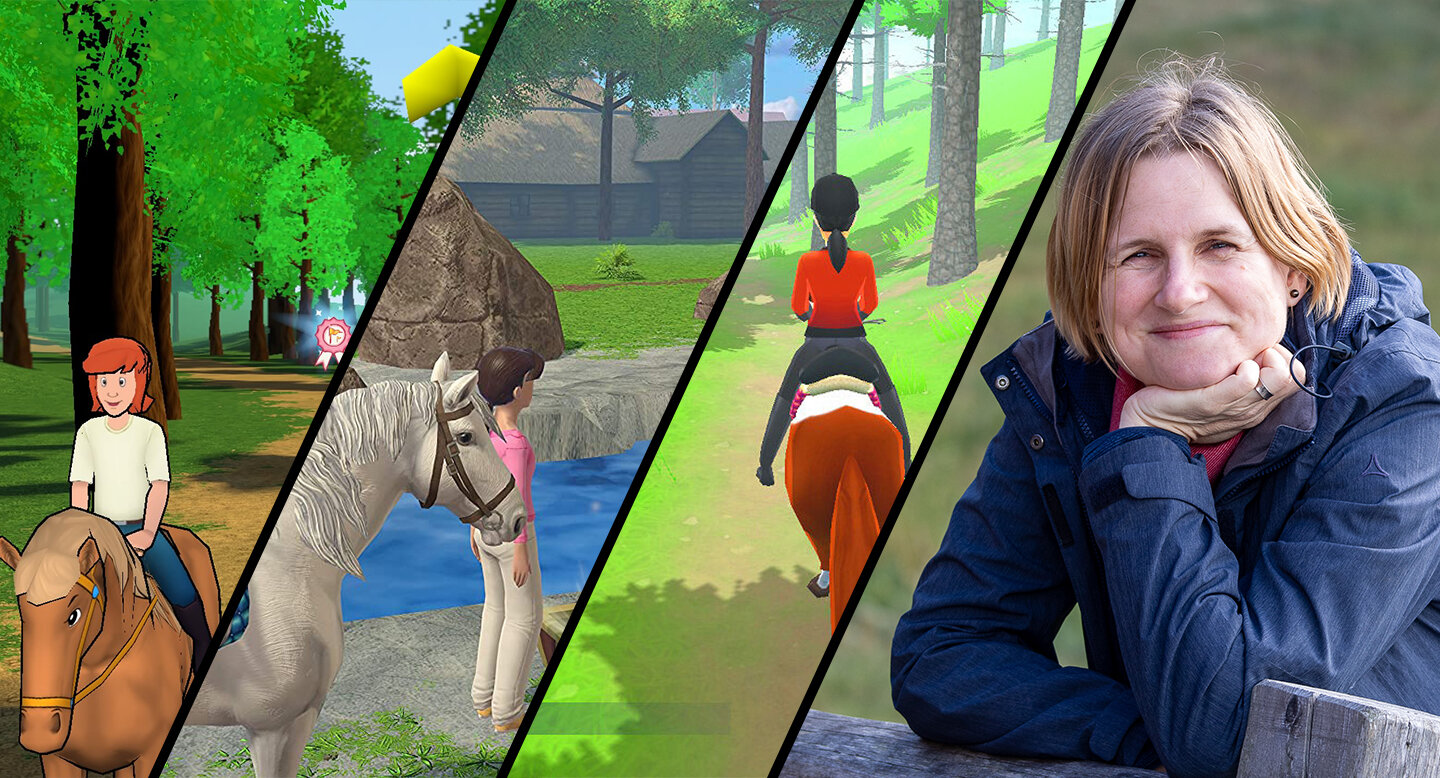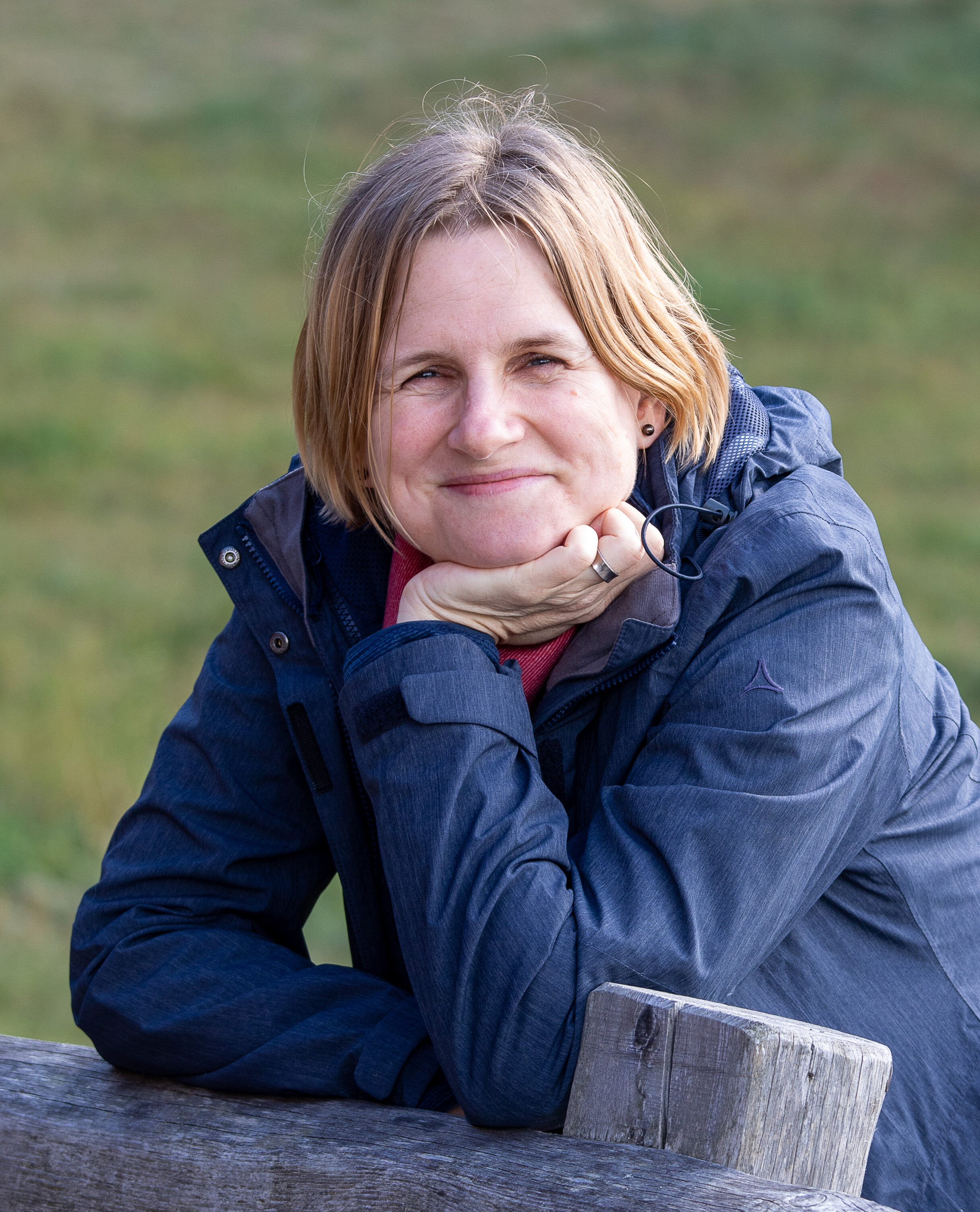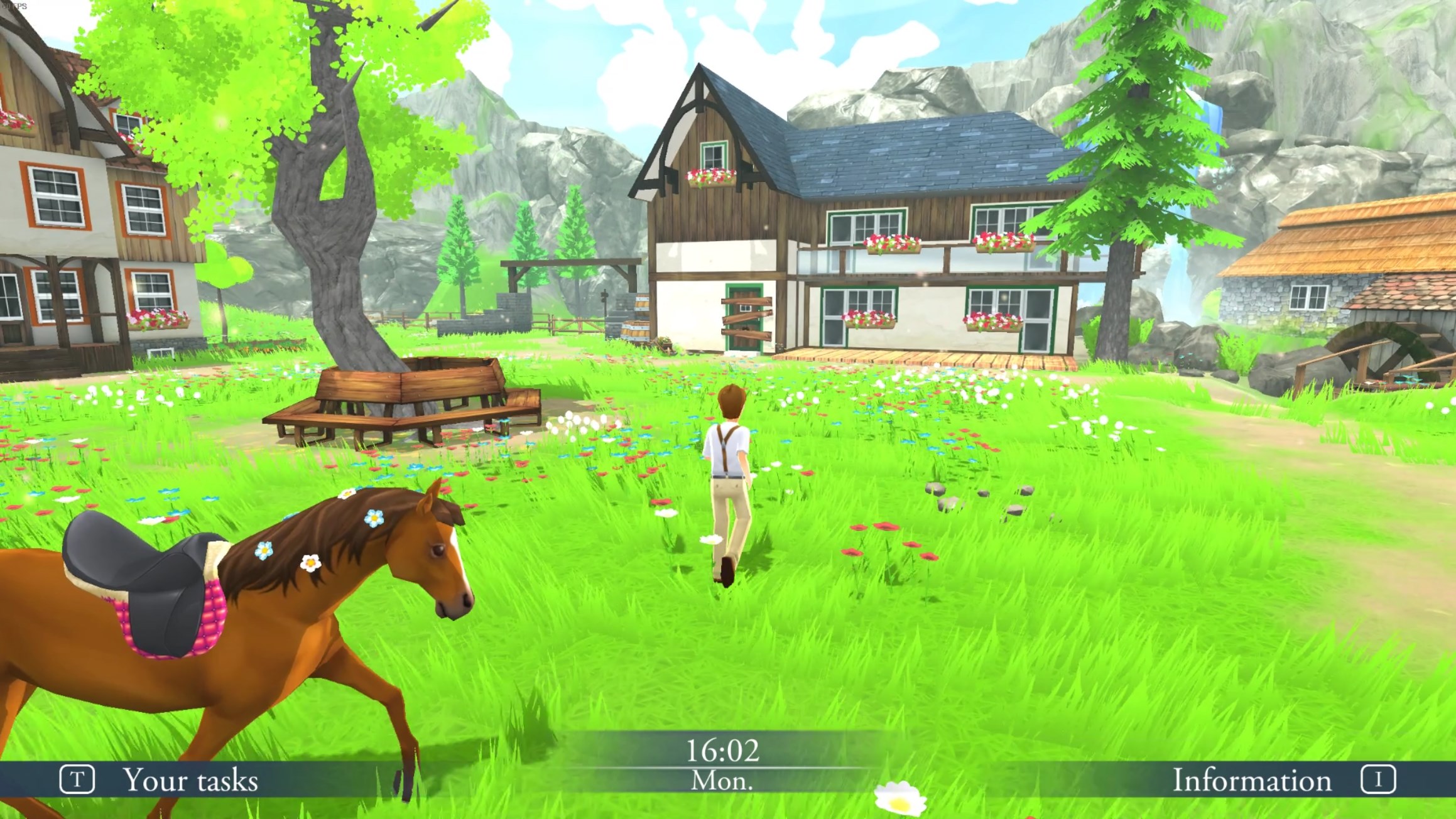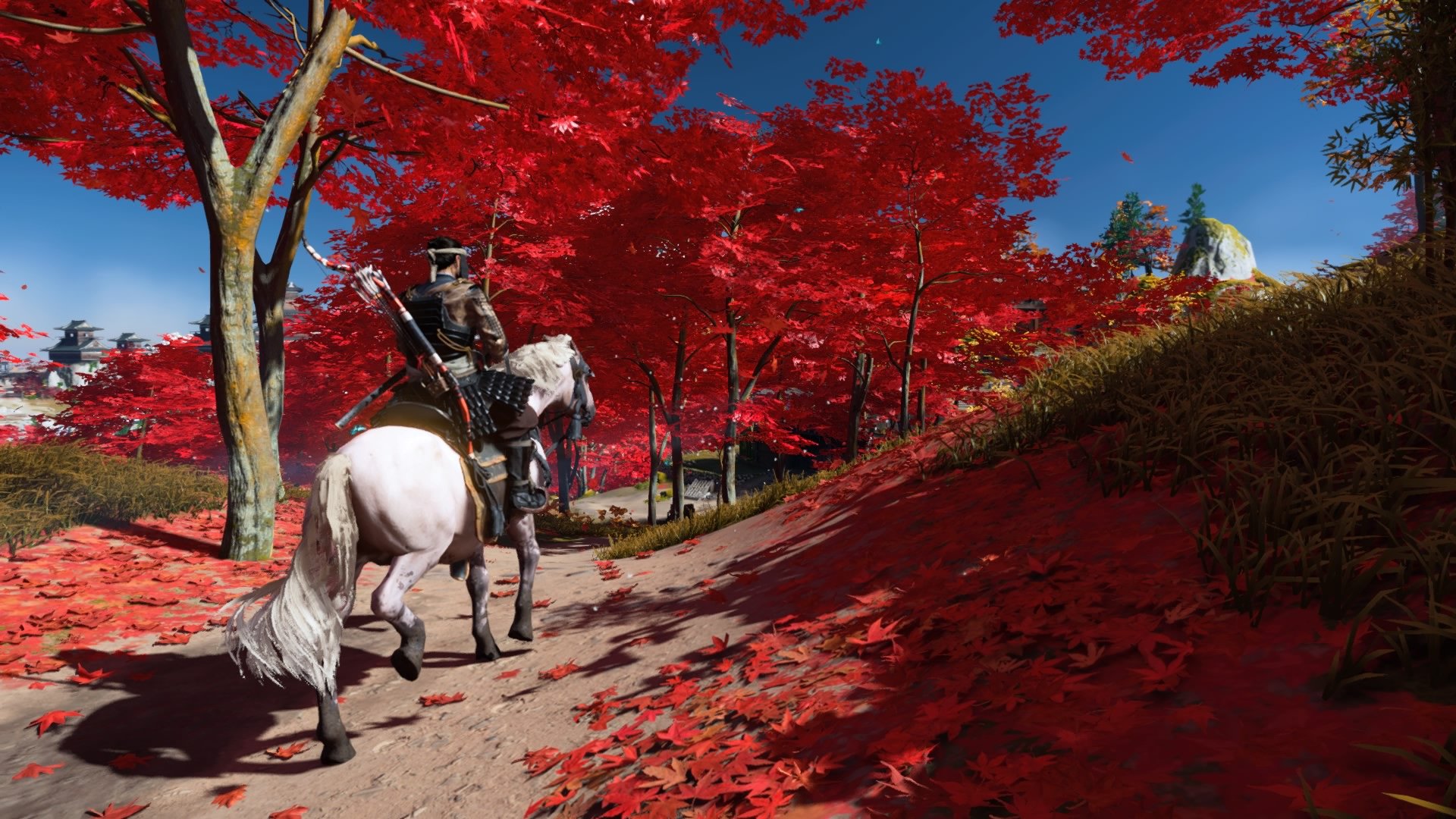“It’s like planning a vacation: you dream of the Maldives, but your ticket will only get you to the Netherlands” — Publisher Interview with Katrin Haase
Markt + Technik is a German company that publishes books and software, with its origins lying almost fifty years back in computer magazines and technical literature. It is also responsible for a long lineup of horse games, a history that dates back to the genre’s inception in 2001. I’ve reviewed several of their games on TMQ: My Riding Stables from 2018, Bibi & Tina at the horse farm from 2019 and My Riding Stables 2 (Mein Reiterhof - Pferde, Turniere, Abenteuer in German) from 2020 all received less than favorable reviews from me.
Late last year, I sat down for a chat with Katrin Haase, who is a product manager for MuT and has long years of experience making games for children. After the many frustrations that this company’s games has let me feel, I finally wanted to know: why do these games get made and how are they produced? And perhaps more importantly: how can they ever become better?
Join me for a fascinating insight into the world of low budget horse game production.
Horse Game History
For the proper context, we need to go back in history to 2001, when the first games of the Pferd & Pony series were published in Germany, and shortly thereafter localized to various regions. Among these first hits was my beloved Mein Pferdehof, developed by Limbic Entertainment but published by a company called DTP Entertainment. Five years and multiple successes later, a sister company by the name of DTP Young was founded to focus on the sale of such kids’ software.
In 2012, the original DTP Entertainment files for bankruptcy and DTP Young gets rebranded to TREVA Entertainment.
“At the heart of the portfolio are internationally established series labels like ‘Horse & Foal’, ‘ANIKIDS’, ‘Classics To Go’ and ‘J4G – JUST FOR GIRLS’”, boasts the company on its website.
The change is short-lived though: the early and mid 2010’s were not a good time for horse games, as you might remember if you were looking for games to play during that time. TREVA declares bankruptcy in 2015 and its assets and licenses are acquired by Markt + Technik. Acquired alongside: my interview partner Katrin Haase, then Senior Marketing Manager at TREVA, now Product & Marketing Manager at MuT. Through these rebrandings and acquisitions, Katrin has worked on kids’ software – including horse games – for fourteen years.
If you have any horse games from the 00’s at home…
…you’ll most likely find the DTP logo on many of them
The creation of games is managed by the publisher but given as work-for-hire projects to external studios – among them Independent Arts Software, the development team behind MuT’s recent horse games.
Katrin Haase has worked in horse game publishing through many highs and lows.
“We do a lot of work with established partners who we’ve come to know well,” Katrin explains to me. Her own tasks as an external project manager include deciding on the game’s features and content and setting timelines, but little involvement in the development process itself.
“Marketing and Distribution are big tasks for me,” she says. In a case like My Riding Stables 2, there is also the involvement of the German government branch BMVI, who provided additional funding.
Katrin’s work is not limited to horse games, nor does she stick to one project at a time: as Product and Marketing Manager, she oversees about 20 game projects in their various stages of development at any given time.
After that initial introduction, I voice the question of what she thinks of The Mane Quest. After all, I’ve been very critical of her work. “Do you see that as useful feedback or would you prefer I shut up and let you do your thing?” I ask somewhat sheepishly.
Katrin laughs. “A bit of both,” she admits. “We definitely take reviews into account when planning games.”
The contents of The Mane Quest get seen in the industry though: Katrin tells me that an American publisher they were in talks with explicitly asked them about my negative review, essentially asking for explanations about the criticisms I raised. While I don’t set out to make anyone’s work harder, I’ve got to admit that I feel some vindication at that.
Scopes and Budgets
I acknowledged in my review that many things I criticized in My Riding Stables 2018 were fixed in My Riding Stables 2 2020. Mine isn’t the only voice that is listened to: Katrin says that she also watches Let’s Plays and reads Amazon reviews to get a sense of common criticism and how to address it. She quickly clarifies that there is only so much they can do with their funds though.
“We have small budgets and big wishes,” she says. “It’s a bit like planning a vacation: you dream of the Maldives, but your ticket will only get you to the Netherlands.”
As Katrin revealed to me before the release of My Riding Stables 2, that game’s total budget was around EUR 120 000. A paltry sum for an “open world game”. As a result, she is aware of many of their games’ flaws but doesn’t necessarily have the resources to fix them.
One YouTuber has over half a million views on his My Riding Stables video.
I ask about the possibility of increasing the games’ budgets. “That would be a big risk for us,” Katrin explains. “Our games currently cost 20-30€ to buy. Bigger investments would mean higher sales prices, and our target audience might not be willing to pay that.” There isn’t just their own company to consider in this, but also the development team and the retailer who takes a cut.
Covering additional costs by widening their target audience is seen as unrealistic however: Katrin believes that an adult audience for horse games might exist, but that MuT as a publisher doesn’t have the budget to cater to them.
What I read from this is that this process has been long established and only marginally changed over the years. It is obviously profitable, but not as profitable as needed to justify bigger risks.
The “Mounted Games” in My Riding Stables 2. More details in my review.
When planning a new game, Katrin and her team conduct a post-mortem analysis of their last comparable project, but they also consider what they can sell and what the market wants. Most recently, this thinking has lead to the addition of the “Mounted Games” mode in My Riding Stables 2. This new feature was also an important consideration in the approval for government funding. I ask what else the BMVI – the German Federal Ministry of Transport and Digital Infrastructure, which has a game sponsorship program – looks for in projects they back.
“The developer has to be located in Germany,” Katrin begins, “and they back projects that might not get made otherwise, but have a chance on the market.”
Another aspect is fostering the general games culture in Germany, she says. For her, the MuT horse games contribute to this by targeting very young female players, who are otherwise often ignored as an audience by the game industry. “We’re proud to offer something that’s explicitly for girls, and to provide fun specifically for them.”
The BMVI application process contains a “Culture Test” that asks for explanations of applicants’ cultural content and value.
“When you look at the games that get backed, you sometimes see some where ask yourself why that would be approved,” Katrin admits. I’ll just take this opportunity to link to the application page, in case any German game creators are reading along here.
The Market and its Development
In the conversation about government backing, Katrin mentions that My Riding Stables 2 would not have been made without this additional funding. Why not?
“The market’s interest in horse games is very limited,” she says. “Especially in international retail, at some point you cannot just sell ‘another horse game’, and they want something new.” Hence the decision to include an entirely new feature like the mounted games multiplayer.
Katrin goes on to explain that although their target audience replenishes itself – older girls growing out of it, but younger ones coming up – an individual game doesn’t necessarily stay on shelves long enough. Their games disappear from stores after a year or two, and for new shelf space they need to release new titles. A snide comment that perhaps if they made better games, they’d stay relevant for a bit longer comes to my mind here, but I swallow that for now.
“And do the players want something like these mounted games?” I ask instead. “It hasn’t been done before, so why not,” Katrin says. “It’s something new and a change of pace. The retailers don’t just want another game focused on tournaments, with show jumping and dressage.”
“What about a different implementation of something like show jumping?” I want to know. “Perhaps something more realistic, where you have to manage your canter strides.” Katrin grimaces, obviously doubtful. “Such an approach would be too subtle a change for it to be interesting to retailers,” she says. She follows that statement up with another example: that of reins. In My Riding Stables 2018, I was not the only one to point out the jarring absence of reins (or saddle girths, for that matter) on the tacked up horses.
“Adding reins that behave with the proper physics is a big effort for development,” Katrin explains. “And only a small fraction of our players would consciously notice it. We’d rather save on the reins and put that budget in a larger world instead.”
I nod, then clarify that I wouldn’t expect their games to have physically realistic reins, but even static ones that reach the withers would be a start, even if the player model’s hands don’t actually “hold” them. “We could do that next time, that’s true,” Katrin agrees.
Some of the horse games available on Nintendo Switch.
She is aware that their games have many shortcomings, and reminds me of the vacation metaphor she made earlier: you want something big, but what you can afford is a lot more modest. I know and accept that – after all, my job as Head of Games at AirConsole has seen me in a very similar role as Katrin, and working with very similar budgets. It is always easy to demand that a game does “more”. I try not to do that, I know games get made within a budget and if something isn’t part of it, then it can likely be traced back to budget limitations. But when the same type of game gets made over and over again in the span of two decades, I believe it is fair to say that there should be some learning in between of what is possible within what sort of budget, and that priorities should be set accordingly.
Due to the demands of retailers, Katrin appears to prioritize quantity rather than quality in her feature list. The result – as we’ve seen time and time again – are games that barely match their promotional descriptions, and half-baked features that are implemented with the absolute barest minimum of functionality, polish and attention to detail.
Katrin told me in November that horse games don’t sell as well as they used to. That they used to have a lot more competition, but the genre has become smaller. I’m not surprised by that. But I think we have very differing opinions of what should be done differently.
In a follow-up email just before publishing this article, I ask Katrin what she makes of the upcoming releases of Spirit Lucky’s Big Adventure and Horse Club Adventures.
“We’re happy to see more horse games on console,” she tells me. “Competition enlivens the market, and there’s enough space for multiple horse games, especially as the titles occupy different pricing categories.”
Some of the horse games available on PlayStation 4.
Competitions and Inspirations
On the subject of competition in the genre, Katrin points out that mobile games have grown significantly as a platform for horse games. Markt + Technik has experimented with mobile games in the past, but they don’t have further plans for that area at the moment. Their strength lies in physical retail, their advantage is the established processes of producing physical copies and getting them on shelves. They have even partnered with fellow German horse game company Upjers to take responsibility for distributing Upjer’s mobile title Horse Farm on the console market.
I bring up Equestrian the Game and its impressive social media following and ask Katrin if she also sees that as proof that a larger audience exists. She acknowledges the admirable reach, but seems doubtful that this interest will translate into revenue – free to play games need a large volume of players to monetize a small percentage of them, after all. As a mobile game for adults, Katrin considers Equestrian the Game as too far removed from what MuT is doing to draw significant parallels. She also sees no potential in the PC market for her own games, largely because the PC gaming market is digital and their strength lies in retail. She believes that for games like My Riding Stables 2, there is no audience on PCs.
I bring up the example of Star Stable Online, and its hundreds of thousands of active players on PC, many of them within the age group that MuT is also targeting.
“Is that a browser game?” Katrin asks, surprising me with obvious unawareness of the most successful game on the horse game market. When I explain that it is a standalone multiplayer online roleplaying game and that I often wonder why its decade-long success doesn’t convince other publishers of the potential of a paying audience of horse-loving PC gamers, Katrin tells me that what they do is too different from MuT in scope to be comparable.
So what can we do then, I ask. As the often ignored audience of “adult gamers who want better horse games”, how can we convince publishers and investors that we exist?
“Critical reviews definitely help us know what to do better,” Katrin replies. She confirms that my goal of building up a community and uniting horse-loving players could eventually become a strong argument.
One could also reach out to the aforementioned government funding offices, and let them know what sort of games this market really needs, Katrin suggests. And I have to admit that the idea of telling the German government what video games I’d want them to fund has a certain appeal to it. Especially since I definitely have opinions on what could be prioritized differently.
Looking Forward
Diving into this subject matter and writing this article has been as fascinating as it has been frustrating. I’m thankful for all the insight Katrin has been able to give me, her transparency about their processes and considerations. Our chat was pleasant, her explanations understandable and honest.
On the other hand, this entire situation makes me want to scream. These games get made and remade every other year, with half-baked features tacked on in an attempt to convince investors and retailers that there’s a reason for their existence, while their publishers lack real understanding of how their games could be much better even within their limited scope. The the fact that this model doesn’t work as well as it used to is vaguely lamented, and chalked up to a changing market and demand, instead of examining the underlying flaws of commissioning a million dollar project on a tenth of the budget.
The feedback I give in my reviews is heard and adapted, but that I even have to tell some of these utterly basic concepts of game design and user experience to a publisher with twenty years of experience in the genre makes me wonder just how little thought process goes into some of these projects. I genuinely appreciate that my reviews are taken into consideration, but at some point publishers like Markt + Technik might as well just hire me as a consultant instead of releasing bad games and then waiting for me to point out the glaring issues they have.
This conversation, fascinating and insightful as it was, has made it clearer than ever to me that we will need independent developers to save this genre, because traditional publishers with their long-running processes and extreme risk aversion are unlikely to ever make meaningful improvements to the horse game niche.
I would never argue that any type of game “shouldn’t exist”. The young and impressionable players who genuinely enjoy these games obviously still exist even as Katrin reveals that their business model is on a downward trajectory.
But in a time where games like Spirit Lucky’s Big Adventure and Horse Club Adventures exist as competition, My Riding Stables and its ilk cannot even justify their existence anymore by being the only few option explicitly aimed at young girls.
Katrin compared the games’ concept stage to vacation planning on a budget. When I look at these products however, I don’t see a quaint little vacation in the Netherlands, with love and attention put into the details. I see a plane that crashed halfway to the Maldives because someone wanted to absolutely get there without actually spending money on fuel or steel.





















